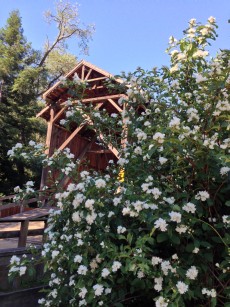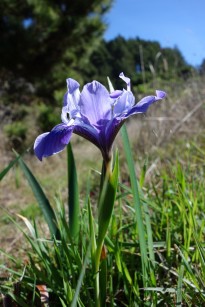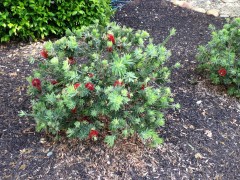With the recent heat wave and the fires burning now in Southern California I?m reminded of our vulnerability to wildfires. The Martin Fire of 2008 and the Lockheed fire of 2009 together burned over 8,000 acres. I often hike in Bonny Doon Ecological Reserve and live close-by where these fires occurred. There?s a large, burned manzanita along the trail that serves as a grim reminder of the devastation that wildfire left in it?s wake. The skeleton-like manzanita, ponderosa pine and many other plants are regrowing from seed left in the soil. The fire was so hot it killed even the plant crowns preventing many of them from re-sprouting. I?ve been monitoring the regrowth for years and it?s progressing nicely but you don?t want this to happen to your property. Is there a landscape that is safer in a wildfire than another? Which plants burn more readily?
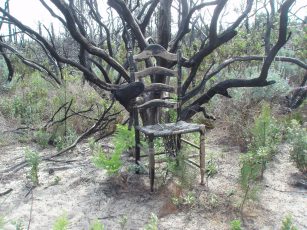
Many people think they have to clear everything within 30 feet of their house to truly have a defensible space. This is unnecessary and actually unacceptable due to soil erosion and habitat destruction reasons. We want to retain the character of this beautiful area we live in, provide the food and shelter that our native wildlife are accustomed to but also reduce fire risk. For example, grasslands mowed to leave 4-6″ of height allow insects, reptiles, amphibians, and small mammals shelter, food and a place to reproduce. Leaving 4-6″ standing also provides some erosion protection and shades out some of the weeds that follow disturbance.
Fire safe landscaping is a term used to describe defensible space. It can look like a traditional landscape. The idea is to surround the home with things less likely to burn and place them to provide separation between canopies and avoid creating fire ladders. Highly flammable plants should be placed, whenever possible, with low-growing and/or low fuel plants.
Many homes may not have 30 ft. between their house and the property line but following these guidelines will help. Plants in this area need to be the slowest to ignite and should produce the least amount of heat if they do burn. There are plants with some fire resistance which include drought tolerant California natives and Mediterranean climate selections. The key to fire resistance, though, is maintenance and keeping the moisture in the foliage high.
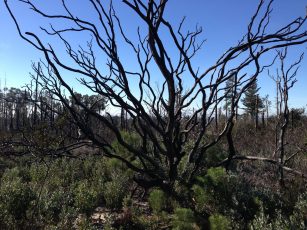
For example, Baccharis pilularis or dwarf coyote brush is generally considered highly flammable if its lush green top growth covers a hazardous tangle of dry branches and leaves several feet high. Trim this plant down low in early spring, remove the dry undergrowth, follow with a light feeding and watering and the new top growth is now resistant to fire.
Other considerations may be as important such as appearance, ability to hold the soil in place and wildlife habitat value. Some fire-resistant California friendly plants are western redbud, monkey flower, ceanothus, sage, yarrow, lavender, toyon, California fuchsia and wild strawberry. Also consider coffeeberry, flowering currant, bush anemone, snowberry, California wax myrtle and evergreen currant. Fire resistant plants from areas include rockrose, strawberry tree, Chinese pistache, barberry, escallonia, oleander, pittosporum, bush morning glory and wisteria to name just a few.
Keep your landscaping firesafe to protect your home.


